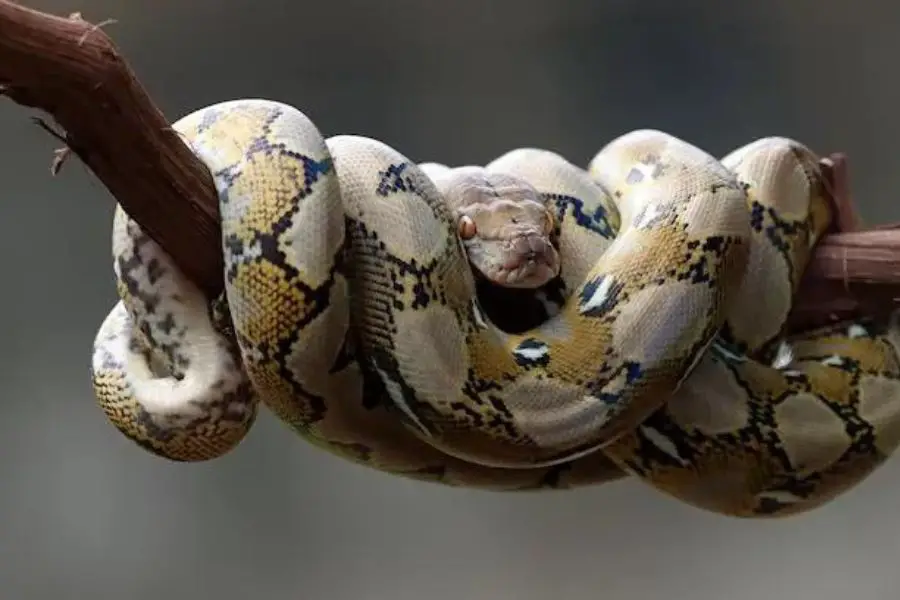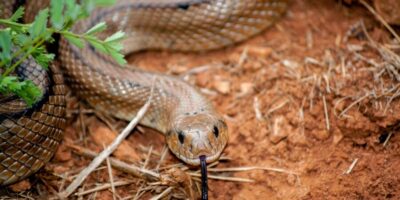Ball pythons are popular pets, and as responsible owners, it’s important to provide them with the right diet and feeding schedule. Overfeeding can lead to various health issues, including obesity, which can negatively impact their quality of life. By learning about their natural feeding behavior and the potential risks of overfeeding, we can ensure that our ball pythons stay healthy and happy.
It’s important to note that intentionally overfeeding a ball python is not recommended and can have negative consequences for their health. Overfeeding can lead to obesity, digestive issues, and other health problems. It’s crucial to provide your ball python with a balanced and appropriate diet to ensure their well-being.
Understanding the feeding behavior of ball pythons
Understanding how to properly feed these amazing creatures is crucial for their health and well-being. In the wild, ball pythons have a unique feeding behavior. They are ambush predators, meaning they patiently wait for their prey to come within striking distance. Their diet primarily consists of small to medium-sized mammals, such as rats, mice, and birds. Ball pythons use their incredible ability to constrict their prey, squeezing them until they are immobilized.
Once the prey is subdued, they swallow it whole, utilizing their flexible jaws and expandable bodies. In captivity, ball pythons are typically fed pre-killed or frozen-thawed rodents, as it is safer and more convenient. Feeding schedules vary, but generally, adult ball pythons are fed every 1-2 weeks, while younger ones may require more frequent feedings. It’s essential to mimic their natural feeding habits as closely as possible to ensure their health and happiness.
Dangers of overfeeding
Overfeeding ball pythons can lead to several risks and health issues. One of the main concerns is obesity. When ball pythons are consistently overfed, they can become overweight, just like humans. Obesity in ball pythons can have detrimental effects on their overall well-being. It can lead to reduced mobility, difficulty shedding their skin, and even put strain on their vital organs.
Additionally, obesity can increase the risk of developing other health problems, such as respiratory issues, heart disease, and digestive disorders. Maintaining a proper feeding schedule and portion control is crucial to prevent these risks and ensure the long-term health and happiness of our scaly friends.
Signs of overfeeding
Here are some signs and symptoms that may indicate that a ball python is being overfed:
- Rapid weight gain: If you notice your ball python gaining weight too quickly, it could be a sign of overfeeding. Regularly monitor their weight to ensure it’s within a healthy range.
- Difficulty shedding: Overfed ball pythons may struggle to shed their skin properly. If you notice incomplete or patchy sheds, it could be a result of excess weight.
- Reduced activity: Ball pythons that are overfed may become lethargic and less active. They might spend more time hiding and show less interest in exploring their enclosure.
- Respiratory issues: Obesity can put pressure on a ball python’s respiratory system, leading to breathing difficulties and wheezing.
- Digestive problems: Overfeeding can strain the digestive system, causing regurgitation, diarrhea, or constipation.
If you observe any of these signs, it’s essential to consult with a reptile veterinarian. They can guide you in adjusting the feeding schedule and portion sizes to promote a healthy weight for your ball python. Remember, keeping a close eye on their overall behavior and physical condition is key to ensuring their well-being.
Signs of overweight
If a ball python is overweight, there are several signs to look out for. One of the most obvious signs is a visibly round or bulging body shape, especially around the midsection. Their body may appear wider than usual, and their skin may stretch or sag. Another sign is a decrease in activity and mobility. Overweight ball pythons may become lethargic and have difficulty moving around.
Additionally, they may have trouble shedding their skin properly, with retained patches or incomplete sheds. It’s important to monitor your snake’s weight and body condition regularly to ensure they maintain a healthy size. If you’re concerned about your ball python’s weight, it’s always a good idea to consult with a reptile veterinarian for guidance.
Proper feeding guidelines
When it comes to feeding ball pythons, it’s important to establish a proper feeding schedule and portion sizes to maintain their health. For adult ball pythons, it’s generally recommended to feed them every 1-2 weeks. Younger ball pythons may require more frequent feedings, typically every 5-7 days. As for portion sizes, it’s best to offer prey items that are about the same width as the widest part of their body. This ensures that they can comfortably swallow their food without straining themselves.
Determining the appropriate amount of food for your snake can be done by following a few tips. First, consider the size and age of your snake. As a general guideline, the prey item should be about the same width as the widest part of your snake’s body. This ensures that it can be swallowed comfortably. Additionally, observe your snake’s behavior after feeding. If it easily consumes the prey item without any signs of discomfort or regurgitation, then the portion size is likely appropriate. However, if your snake struggles to swallow or shows signs of being overly full, it may be necessary to adjust the portion size accordingly. Remember, it’s always best to consult with a reptile veterinarian for personalized guidance based on your snake’s specific needs.
Conclusion
Maintaining a healthy feeding routine for ball pythons is of utmost importance. By following recommended feeding schedules and portion sizes, you can help ensure the overall well-being of your snake. Overfeeding can lead to various health issues, such as obesity, respiratory problems, and digestive complications.
On the other hand, underfeeding can result in malnutrition and stunted growth. By finding the right balance, you can promote a healthy weight and proper development for your ball python. Remember, consulting with a reptile veterinarian and closely monitoring your snake’s behavior and physical condition are key to providing the best care possible.




